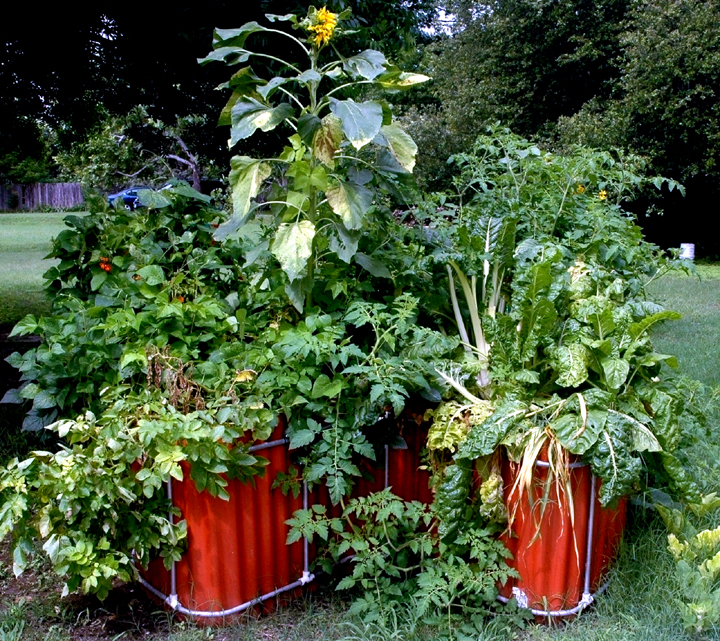 Abnormally high, record-breaking rainfall during May here in Central Texas proves that not only are keyhole gardens good in drought, but because of drainage, standing water on the ground is not a problem either, except sloshing through it with your feet. Keyhole gardens handle both extremes — very dry and very wet conditions — extremely well. The over-abundant rainfall in the gardens is more of a pass-through. My crops have been doing very well considering the lack of sunshine that has accompanied the rains. They are getting watered virtually every day. The downside is that usually I try to teach my plants to not need as much water and that is hard to do when Mother Nature is so generous.
Abnormally high, record-breaking rainfall during May here in Central Texas proves that not only are keyhole gardens good in drought, but because of drainage, standing water on the ground is not a problem either, except sloshing through it with your feet. Keyhole gardens handle both extremes — very dry and very wet conditions — extremely well. The over-abundant rainfall in the gardens is more of a pass-through. My crops have been doing very well considering the lack of sunshine that has accompanied the rains. They are getting watered virtually every day. The downside is that usually I try to teach my plants to not need as much water and that is hard to do when Mother Nature is so generous.
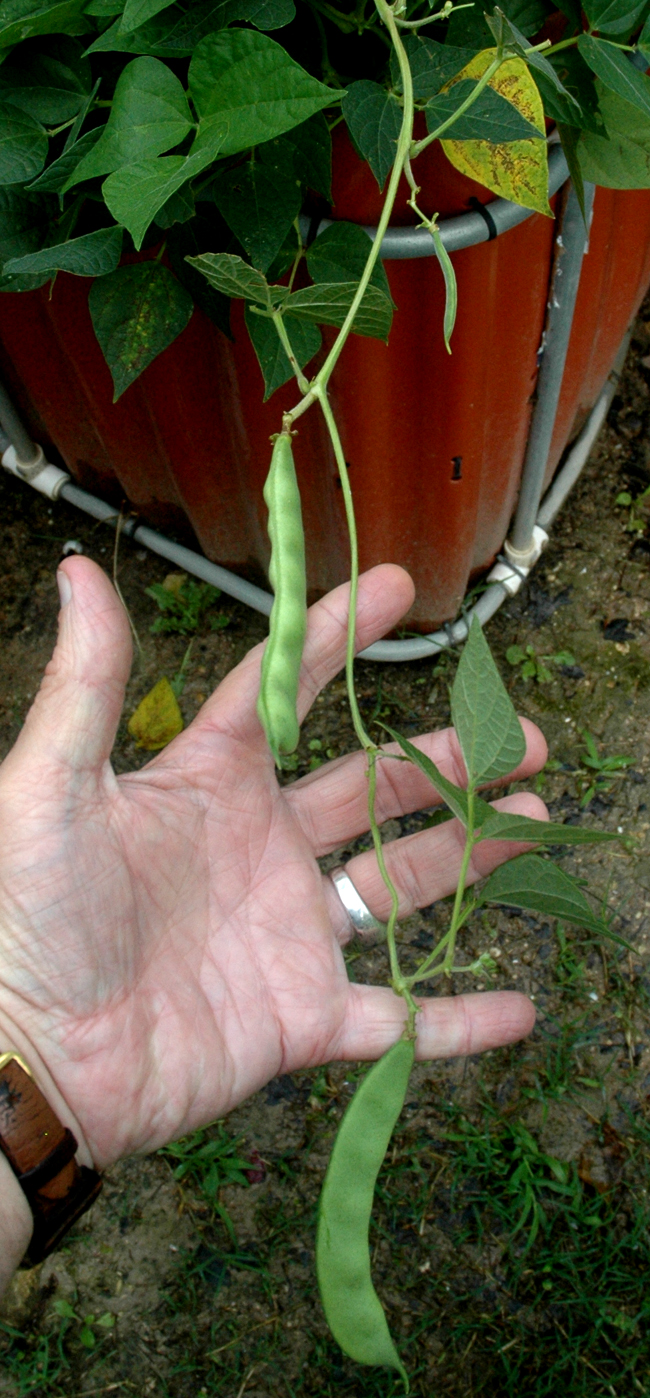 This year, I planted different varieties of green beans in eight of my 11 experimental gardens, partially to put nitrogen back in where I planted other crops that use a lot of nitrogen. The end result has been that it often takes me two hours a day of straight picking to harvest the beans before they get too large. This, of course, is good for our freezer and for the supper table. (Click on images to enlarge.)
This year, I planted different varieties of green beans in eight of my 11 experimental gardens, partially to put nitrogen back in where I planted other crops that use a lot of nitrogen. The end result has been that it often takes me two hours a day of straight picking to harvest the beans before they get too large. This, of course, is good for our freezer and for the supper table. (Click on images to enlarge.)
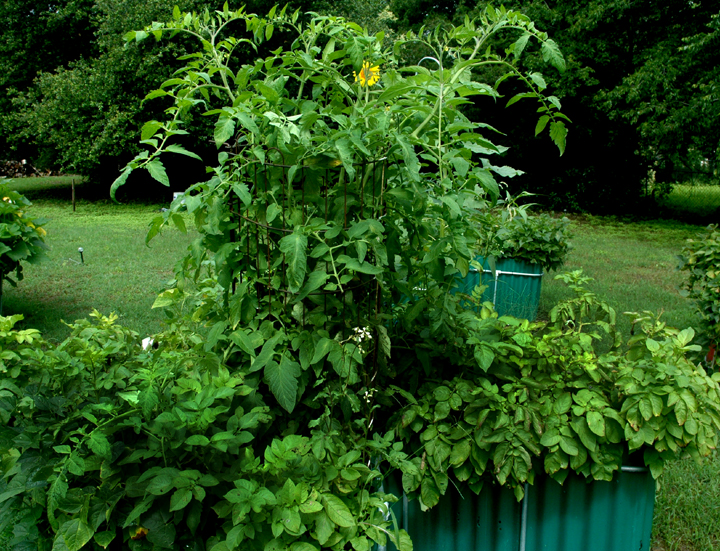 I used to think that okra was the plant that you had to monitor closely to pick prior to the crops getting too large, often twice a day, but green beans grow fast, too. It takes just a day to have a whole new batch ready to pick. I go out in the morning and look among the leaves and find large quantities of green beans that are perfect to harvest.
I used to think that okra was the plant that you had to monitor closely to pick prior to the crops getting too large, often twice a day, but green beans grow fast, too. It takes just a day to have a whole new batch ready to pick. I go out in the morning and look among the leaves and find large quantities of green beans that are perfect to harvest.
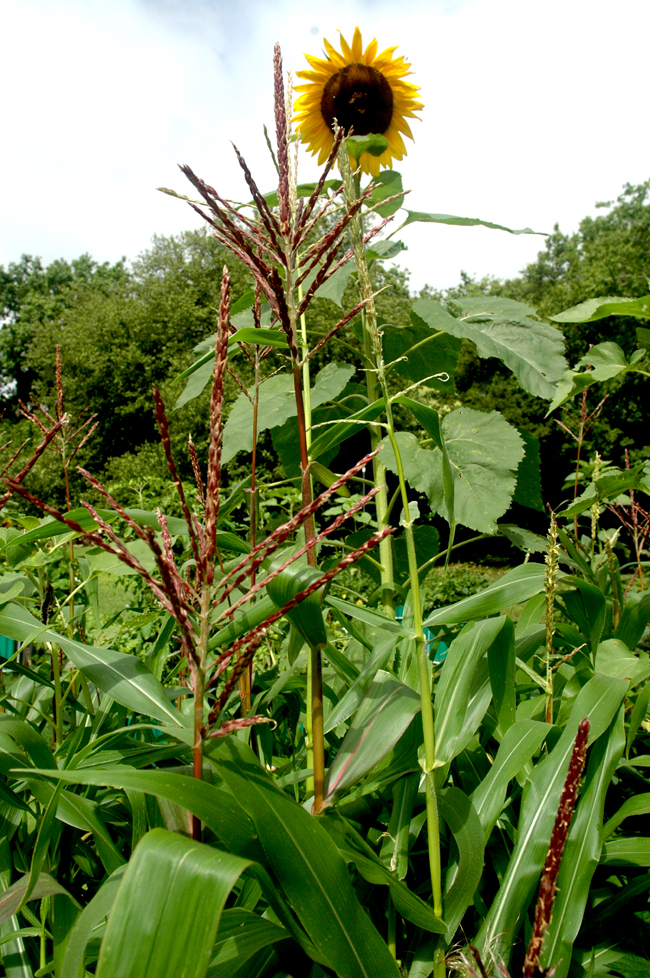 My tomatoes are starting to turn red (there are a lot of them) and I’ve picked crook-neck squash, onions, chard, lettuce, and zucchini, as well.
My tomatoes are starting to turn red (there are a lot of them) and I’ve picked crook-neck squash, onions, chard, lettuce, and zucchini, as well.
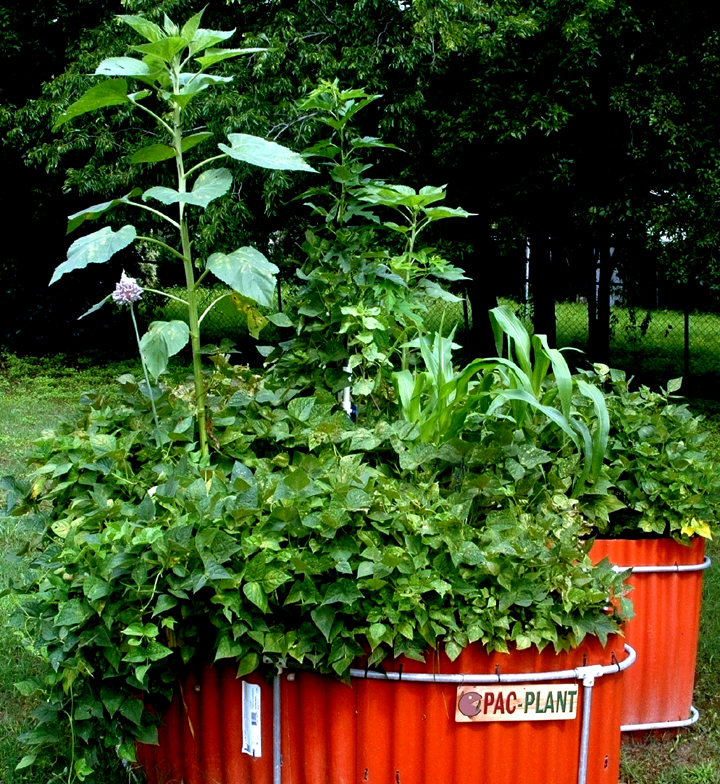 One of my keyhole gardens is planted almost exclusively in potatoes. The tops have been rich and green, with the perfect mix of flowers. These plants are just now starting to turn a little brown. When they die off, I plan to then dig below the surface where I hope to find some fairly large potatoes.
One of my keyhole gardens is planted almost exclusively in potatoes. The tops have been rich and green, with the perfect mix of flowers. These plants are just now starting to turn a little brown. When they die off, I plan to then dig below the surface where I hope to find some fairly large potatoes.
In another garden, I planted black-eyed peas much earlier than usual, first germinating the seeds (using carbonated water). Right now is the approximate time that I usually plant black-eyes, but now I already have some growing that will be ready for harvesting in a few days.
I am also having great luck with “feed the world” fava beans. They are enormous.
My corn is looking good, as is some spring wheat that I am experimenting with.
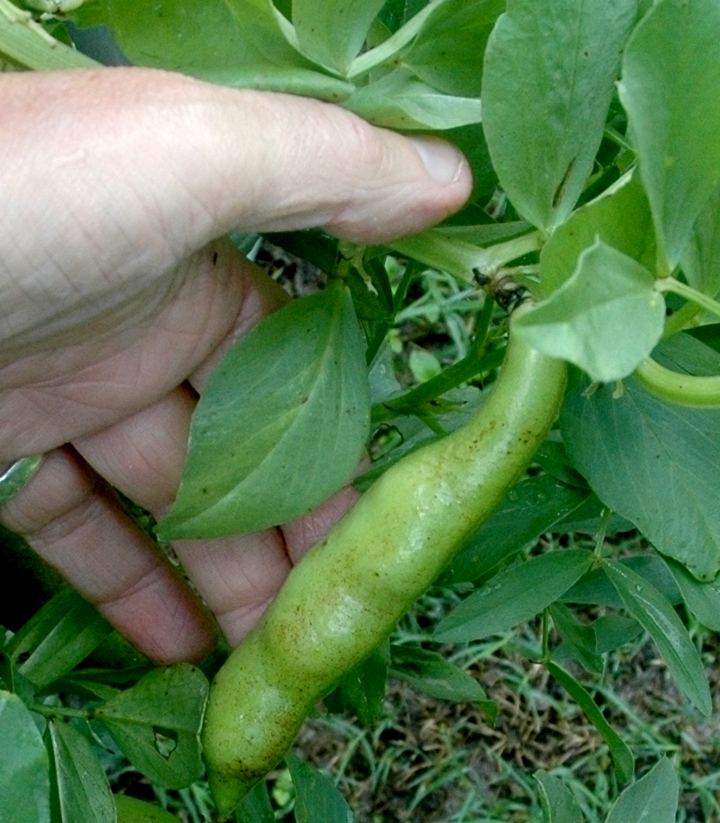 Here at Keyhole Farm, I have a decision to make. In two of the gardens, I thought the green beans had about run their course and was considering pulling them up to plant okra. This morning I went out and these green bean patches are filled with new white flowers, perhaps echoing a big second round of produce.
Here at Keyhole Farm, I have a decision to make. In two of the gardens, I thought the green beans had about run their course and was considering pulling them up to plant okra. This morning I went out and these green bean patches are filled with new white flowers, perhaps echoing a big second round of produce.
It has been the bush beans that I have been primarily picking. The runner beans are running on a slightly slower schedule, but are now putting on small pods, a few of which have already grown large enough to pick. I expect that my growing season for green beans will extend perhaps into July or beyond. Generally when I pick a round of green beans I come away with several meals’ worth, which I think would make them a good choice for soup kitchen enterprises.
Let me remind you that keyhole gardening can be a year-round experience. Certain crops do better during different times of the year so you certainly don’t have to begin the journey in the spring. I am thinking of summer right now, and even beyond to what I want to raise in the fall.
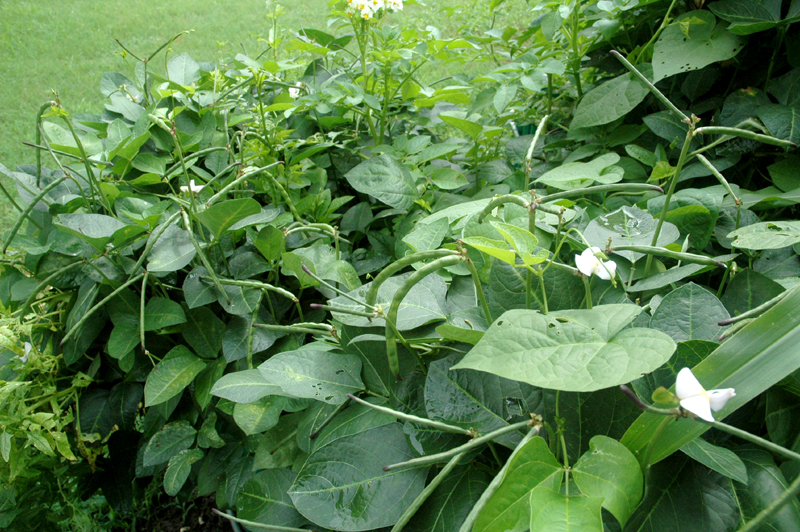 Keyhole gardening also fits many personalities. For instance, if you are an adventurer, there is no greater expedition than trekking through the jungles of a keyhole garden and finding that perfect plant and learning the ways of birds and insects. If you are a gambler, take on Mother Nature as your challenger. In gardening, sometimes she holds a pair of deuces while you have a full house, so you win. But sometime she doesn’t bluff. If you are a doctor, perhaps you can give birth to thousands of hearty plants. If you are a nurturer, what better opportunity than to care for thousands of plants and watch them grow into healthy adults. I know I am exaggerating here, but in a way I am not. There is great satisfaction in gardening and for the sake of humanity, it is something that the younger generation needs to learn. It is a skill that will stay with them always.
Keyhole gardening also fits many personalities. For instance, if you are an adventurer, there is no greater expedition than trekking through the jungles of a keyhole garden and finding that perfect plant and learning the ways of birds and insects. If you are a gambler, take on Mother Nature as your challenger. In gardening, sometimes she holds a pair of deuces while you have a full house, so you win. But sometime she doesn’t bluff. If you are a doctor, perhaps you can give birth to thousands of hearty plants. If you are a nurturer, what better opportunity than to care for thousands of plants and watch them grow into healthy adults. I know I am exaggerating here, but in a way I am not. There is great satisfaction in gardening and for the sake of humanity, it is something that the younger generation needs to learn. It is a skill that will stay with them always.